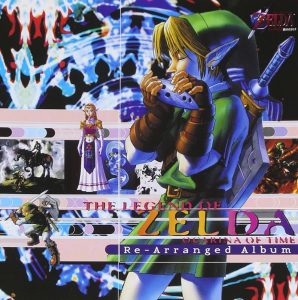The New S Curve: Sustainability in Fashion
May 9, 2019
The Devil Wears Prada is an admittedly overdramatized take on the fashion industry. The audience is treated to countless references to top designer labels and an inside look at dimly lit, invite-only parties, portraying the fashion world as mostly gloss, glamour and free designer makeovers. The film follows Andy (Anne Hathaway), a recent college grad and aspiring journalist who takes a position as personal assistant to Miranda Priestly (Meryl Streep), the infamously brutal editor of Runway Magazine, the film’s version of Vogue.
Satirical as this version of the fashion world may be, we learn something important about the industry from one monologue in particular. When Andy naively refers to a collection of designer clothes as “stuff,” inferring high fashion is unrelated to her life, Miranda cooly, mercilessly informs her that even the ugly “lumpy blue sweater” Andy chose to wear represents millions of dollars, countless jobs and important decisions made by top designers that eventually trickled down to her decision of what to wear.
Through this exchange, Andy and the audience learn no one is isolated from the fashion industry. Even if we aren’t all designers or fashion enthusiasts, we all play a part in how clothes are produced and purchased based on what we choose to wear (or not wear). There is a constant give-and-take between how the fashion market produces and how the fashion consumer buys.
Which brings us to the latest buzz word in the fashion industry: sustainability. What is becoming just as important as quality or design is how clothes are produced and purchased. On both ends of the sustainability movement, individual consumers and large organizations like Global Labor Justice, Greenpeace Detox Catwalk and Green America are calling on designers and fast-fashion companies like H&M, Forever21, Gap and Zara to take greater responsibility for their environmental impact and treatment of their employees.
And for good reason. The fashion industry is one of the largest contributors to environmental pollution and has a history of exploiting labor. According to the World Resources Institute, in 2015 polyester production of textiles released 706 billion kg (1.5 trillion pounds) of greenhouse gases in 2015 — the equivalent of 185 coal-fired power plants’ annual emissions. In most of the countries where garments are produced, toxic wastewaters from factories run directly into rivers. The women who make up the majority of garment makers in fast-fashion supplier factories are too often underpaid: a 2011 study conducted by War on Want revealed a garment factory helper’s wage started at just £25 (around $28) a month – far below living wage. Female workers are usually under management of mostly-male superiors, leading to a hierarchical structure that makes it difficult for female workers to voice complaints or report abuse.
Eva Stevens, coordinator of Fashion Studies at COD, is a former designer with a range of experience in the fashion industry. Stevens said she’s seen major changes in the fashion industry.
“I designed sweaters,” Stevens said when asked if she had any memories of what the first fast-fashion brand looked like. “It took so much work and was expensive to add decoration and embroidery to sweaters. Then trade regulations changed, and everything was decorated. Walmart suddenly had sweaters with embroidery and fringes. Everything was decorated because trade was cheap.”
In the 1980s and 90’s, trade deals changed and globalization radicalized the paradigm of the fashion industry. When the U.S. loosened trade regulations, the clothing market was suddenly saturated with clothes from all over the world. Open trade meant China could sell the same clothes made here — and with more variation — for less money. Buyers responded. Which brings us to the fast-fashion model that dominates retail today.
“The good thing about fast fashion is it’s brought sustainability issues to the forefront,” Stevens said. “But fast fashion is the problem. When our trade deals loosened up, people thought, ‘Well, that’s great, why not have clothes from all over the world sold here? It saves people money and helps other countries if they sell here.’”
But negative effects of fast fashion reach further than we realize. On the most basic level, quickly discarded garments add to our collective waste. Because we are able to buy new clothes so quickly, we are also able to dispose clothes just as quickly. If we decide to donate our old clothes to those in need instead, it can still cause problems.
“Donations being sent to other countries are sorted in Texas,” Stevens said. “So the best used clothes go to Mexico. What’s left goes to South America. The worst of the worst goes to Africa.”
Africa used to have strong textile industries before its countries were flooded with America’s used clothing. According to studies conducted by BBC, East African governments argued domestic demand for locally made clothes was being suffocated by cheap, second-hand clothes. East Africa, Rwanda, Kenya, Uganda, Tanzania, South Sudan and Burundi do not want more second-hand clothes because their own textile industries suffer.
“Africans are using second-hand clothes as fuel,” Stevens said. “There is such a wealth of extra second-hand clothes that they use them as firewood. They burn the clothes. Polyester clothes and dyes. So these people are breathing in harmful chemicals and gases.”
In response to these issues, a number of luxury brands are moving in a more eco-friendly and socially conscious direction. Armani, Jimmy Choo, Calvin Klein, Givenchy, Gucci, Hugo Boss, Ralph Lauren and Tom Ford have announced a turn from using real fur to faux fur. Vivienne Westwood has called on other luxury labels to switch from fossil fuels to green energy. Gucci recently launched a 10-year sustainability plan that includes a “scrap-less programme” to reduce the quantity of leather that is treated during the manufacturing process. LVMH, a multinational luxury goods conglomerate, announced they will invest more in sustainability starting with a carbon fund to raise money for every ton of CO2 emission the brands generate from 2018.
The everyday fashion buyer has also become more aware and committed to buying ethically produced fashion. In 2015, 51% of Baby Boomers and 72% of Gen Z buyers said they are willing to pay more for products from environmentally and socially conscious companies, according to a Nielsen online global study. Millennials are especially engaged in researching eco-friendly brands and are vocal about their interest in supporting sustainable causes, according to a recent article on bizjournals.com. But it will take some time before buyers fully commit to conscious consumption; among other obstacles, shoppers are often unaware of sustainable brands or perceive sustainable options to be limited in style. This could be part of the reason online resale apps and thrifting have emerged as popular, comparably sustainable shopping methods.
Where do we go from here? Americans are big spenders, and our desire to buy is not expected to dwindle any time soon. Americans consume twice as much as we did 50 years ago, according to stats cited at becomingminimalist.com.
“If there’s anything I want people to take away from this, it’s that we are capable of changing the fashion industry,” Stevens said. “But we have to know what to do. All it takes is small changes. Wear something for longer than you usually would. Pay a bit more for a shirt. It all helps.”
Change is not impossible. We all have a hand in changing the fashion industry for the better. If you’re looking for practical ways to buy ethically, you can:
- Choose quality over quantity. Always. The extra cost is worth it.
- Wear an item of clothing for a long time. Livia Firth, founder of the Green Carpet Challenge, lead a campaign that encouraged people to wear everything in your closet 30 times before replacing.
- Care for your clothes. The better the care, the less likelihood you’ll need to repair or replace the piece.
- Sew! Instead of throwing a pair of pants away because they tore on the side, use a needle and thread to mend it back.
- Swap clothes with friends. You can instantly get new styles without spending a dime.
- Thrift. You can find great new and used clothes at local resale, thrift, and consignment shops.
- Consider buying from online resale apps like Poshmark and Mercari—basically thrifting, but online
If you’re looking to buy something new, there are a number of sustainable brands to choose from:
Designer
- Stella McCartney
Fun, fashion-forward pieces
- Eileen Fisher
Sophisticated, classic wardrobe must-haves
- Rag & Bone
High-quality denim and extensive collections for men and women
Recreational
- Patagonia
- REI
Both brands offer quality outdoor apparel and activewear
Casual/Everyday
- Alternative Apparel
Basics for men and women
- Threads for Thought
Casual street and activewear
- H&M Conscious Collection
Basics and fashion-forward pieces; prices range from $9-$300
Personal Favorites
- Boden
Modern work apparel and preppy, everyday basics
- Reformation
Edgy takes on modern basics
























